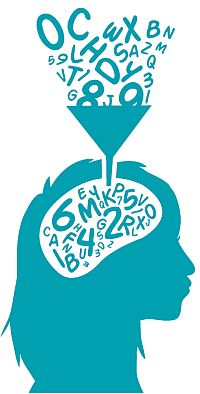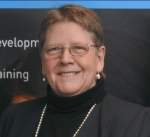Published on the 07/07/2015 | Written by Brenda Aynsley

The world is increasingly digital, but what of its citizens? With the march of technological progress, jobs are changing and Brenda Aynsley questions whether today’s educational curricula are preparing people for tomorrow’s world…
We live in a digital world where information and communications technology (ICT) is a fundamental driver of productivity growth, competitiveness and innovation. With ICT sitting at the core of virtually every product and service we consume, there are significant implications for the skill sets needed in our economy. The job roles that will be required in a digital world, and therefore, the way in which our education system prepares today’s young people for successful careers has to change. Successful economies of tomorrow will need people who can go beyond knowing how to consume and use technology. They will need to know how to create and build new products and services based on new technologies. As it stands, more than two-thirds of Australia’s ICT workforce is made up of men, with just 28 percent women. A core part of this issue traces back to education programmes, recognised in Australia as early as 2007, but with little done about it since. Fundamentally, all the way from kindergarten and onwards, girls are not taught in ways that are meaningful to them, particularly in the STEM subjects (science, technology, engineering and maths). In the US, girls currently comprise just 12 percent of university computer science students. But Berkeley University was able to drive a huge increase in female sign-ups by simply changing the title of a computer science class from ‘Introduction to Symbolic Programming’ to ‘Beauty and the Joy of Computing’. Today, there are almost equal enrolments between men and women in that class. What can be done about it? School systems need to review how they are delivering education. We need to create classes that engage young females right from an early age, if we are ever to increase female participation in ICT. Businesses also need to do what they can to support improved participation in ICT from women. We are seeing fantastic initiatives starting to emerge, with specifically designed coding programmes such as Girls Who Code. Even influential female celebrities are getting on board; Victoria’s Secret model Karlie Kloss has recognised the need for more women in the industry and has developed The Kode With Karlie Scholarship. US Presidential hopeful Hillary Clinton is on board, as demonstrated by her having put gender issues, including women in technology, at the centre of her campaign. For its part, the ACS is celebrating the 10th anniversary of the Women in IT Board and has worked hard to get this issue on the national agenda. There is no time to waste. With some estimates indicating that up to half of the job roles of today will disappear in the next 10 years because of automation, employment is moving up the supply chain. With fewer low skill jobs and increased demand for jobs requiring high technology and ICT-related proficiencies, we must act now to help prepare today’s school students, both male and females, for the digital world of the future. ACS president Brenda Aynsley has two passions in this life: to promote the value of professionalism as a necessary condition for all practitioners of ICT and to promote the internet as a communications medium that can enable and empower citizens and communities. The problem
The problem
The main problem is a requirement to update the current education curriculum with improved technology learning right from primary schools. At the same time, ICT teaching needs to speak to both boys and girls, who have different learning needs. Current approaches favour boys.
Computational thinking needs to be recognised in our education system as a foundation skill alongside numeracy and literacy, and just as boys receive special attention in recognition of their learning difficulties attributable to gender differences (such as reading and in behavioural issues), so too do girls need to be taught in ways that are meaningful to them.































This article that should be sent to schools across Victoria. As Victoria schools have seen a massive drop in females numbers in IT courses. I agree with introduction of computational thinking and courses that teaches how to become thinkers and problem solvers. I am an educator and developed Computer Science course in year 10 with the aim to attract females. At my school we have an uphill battle but I have been able to get a slight increase in female numbers.